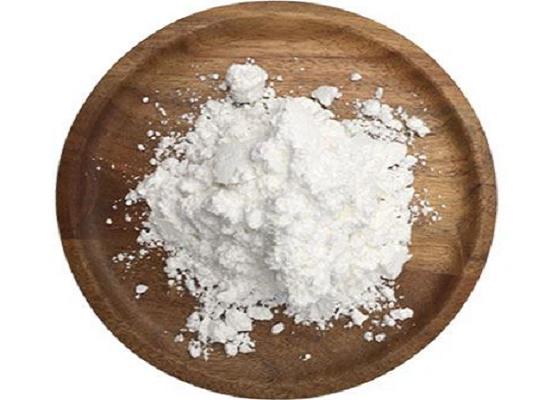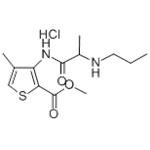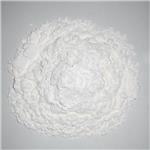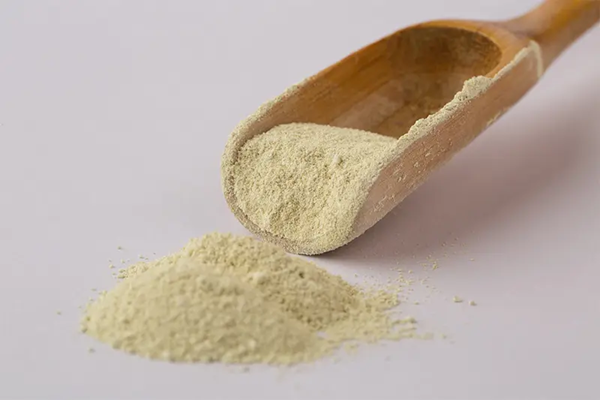Articaine hydrochloride: pharmacology, efficacy and side effects
Nov 23,2023
General Description
Articaine hydrochloride is a local anesthetic with a unique chemical structure that allows for effective penetration of neuronal sheaths and membranes. It has a faster onset and longer duration of clinical activity compared to other local anesthetics. Studies have shown conflicting results regarding its potency, but it has been found to provide similar pain relief to lidocaine when used with adrenaline. Articaine is particularly effective in anterior maxillary regions and inflamed pulpal tissues. The use of 4% articaine with adrenaline has been found to be more superior in anesthetizing first permanent molar teeth. However, it may be less potent when administered through the inferior alveolar nerve block technique. The concentration of vasoconstrictor in the solution has limited impact on efficacy, but the presence of adrenaline in 4% articaine is considered essential for consistent profound anesthesia. Common side effects include CNS disturbances, ophthalmologic complications, cardiovascular effects, and the risk of paraesthesia, especially with the IANB technique. Overall, caution should be exercised when using articaine, but it has a relatively higher level of safety due to its rapid breakdown and low systemic toxicity.

Figure 1. Articaine hydrochloride
Pharmacology
Articaine hydrochloride is a unique local anesthetic with a chemical structure that includes both an amide group and an ester linkage, as well as a thiophene ring instead of the typical benzene ring found in other local anesthetics. This composition contributes to its high lipid solubility, allowing it to penetrate neuronal sheaths and membranes more effectively than other agents. Additionally, articaine's lower dissociation constant (pKa) of 7.8, compared to lidocaine's pKa of 7.9, results in a greater proportion of uncharged base molecules available for diffusion through nerve sheaths, making it particularly effective for anesthetizing abscessed or inflamed tissues. A 2.2mL cartridge of 4% articaine hydrochloride with adrenaline 1 in 100,000 typically contains 88 mg of articaine and 10μg/mL adrenaline. The maximum recommended dose for adult patients is 3.2 mg/lb or 7 mg/kg body weight, with a total dosage application limit of 500 mg. This drug is not recommended for patients under four years old, but the use of 2% articaine has been reported as clinically acceptable for pediatric dentistry. Articaine hydrochloride has a relatively short half-life of approximately 20 minutes and is less systemically toxic than other local anesthetics due to its rapid metabolism and excretion, primarily as inactive metabolites through the kidneys. 1
Efficacy
The efficacy of Articaine hydrochloride, a local anesthetic agent, is a subject of debate. It is believed that Articaine has a faster onset and longer duration of clinical activity compared to other local anesthetics. However, conflicting results have been reported regarding its potency. Studies have shown that Articaine provides similar pain relief to Lidocaine when used with adrenaline. However, a systematic review found that Articaine had a higher probability of successful anesthesia in infiltration procedures compared to Lidocaine. Articaine was found to be superior in anterior maxillary regions but showed less superiority in maxillary molar areas. Similar variations were observed in mandibular teeth. Articaine administered through the inferior alveolar nerve block (IANB) technique was found to be less potent compared to the infiltration technique using Lidocaine. No significant difference was observed when these agents were administered to symptomatic teeth. The use of 4% Articaine with adrenaline was found to be more superior than 2% Lidocaine with adrenaline in anaesthetizing first permanent molar teeth. In inflamed pulpal tissues, Articaine was shown to be more effective in achieving pulpal anesthesia in the maxillary posterior region. The GowGates block technique was suggested as a more effective method for mandibular teeth. Articaine delivered by buccal infiltration alone was more effective than Lidocaine delivered by the IANB technique for achieving pulpal anesthesia in the posterior mandible. The concentration of vasoconstrictor in the solution had limited impact on efficacy, but the presence of adrenaline in 4% Articaine was considered essential for consistent profound anesthesia. 2
Side effects
Articaine hydrochloride, a local anesthetic, has been associated with a range of side effects. Common adverse effects on the central nervous system (CNS) include restlessness, anxiety, tinnitus, lightheadedness, excitement, convulsions, dizziness, tremors, depression, and drowsiness. Ophthalmologic complications, such as diplopia and ocular disturbances, have been reported, possibly due to the anesthetic solution's diffusion through tissues. Additionally, headaches, facial edema, gingivitis, and skin necrosis have been described. The cardiovascular effects of 4% articaine hydrochloride include reduced myocardial contractility, peripheral vasodilation, depressed cardiac conduction and excitability, ventricular arrhythmia, cardiac arrest, and rarely, death. Caution is advised when using articaine in patients with severe hepatic impairment. On the other hand, articaine has a relatively higher level of safety due to its rapid breakdown to an inactive metabolite, resulting in low systemic toxicity. Allergic reactions, including skin rashes and itching, are rare, and may be attributed to the addition of sodium metabisulphite as a preservative. Paraesthesia, defined as unusual abnormal sensations, has been associated with articaine use, particularly with the IANB technique. There have been reports of nerve injury, with the lingual nerve being more frequently affected than the inferior alveolar nerve. The alleged risk of paraesthesia may also be influenced by the 'Weber effect', where closer scrutiny of new products leads to a tendency to report adverse effects. However, the incidence of reported paraesthesia has shown a reduction over time despite increased usage of articaine, suggesting a possible decrease in associated risks. In conclusion, while articaine has shown a higher level of safety due to its rapid breakdown and low systemic toxicity, caution should be exercised due to the potential for adverse effects on the CNS, cardiovascular system, and the risk of paraesthesia, especially when administered via the IANB technique. 3
Reference
1. Kakroudi SH, Mehta S, Millar BJ. Articaine hydrochloride: is it the solution? Dent Update. 2015 Jan-Feb;42(1):88-90, 92-93.
2. Paxton K, Thome DE. Efficacy of articaine formulations: quantitative reviews. Dent Clin North Am. 2010 Oct;54(4):643-653.
3. Wells JP, Beckett H. Articaine hydrochloride: a safe alternative to lignocaine? Dent Update. 2008 May;35(4):253-256.
- Related articles
- Related Qustion
- What is Articaine hydrochloride? Sep 8, 2021
Articaine is a dental amide-type local anesthetic. It is the most widely used local anesthetic in a number of European countries and is available in many countries.
- Articaine hydrochloride--Potency, Toxicity, Metabolism, Excretion, Pediatric use and recommended dose Oct 13, 2020
Articaine hydrochloride with epinephrine is contraindicated in persons with known sensitivity to amide-type local anesthetics (few to none) and in persons with sulfite sensitivity (such as some asthmatic patients with allergic-type asthma,
Supplementation with pyridoxal 5'-phosphate monohydrate can synthesize neurotransmitters such as dopamine and serotonin, maintaining a healthy nervous system.....
Nov 4,2025Biochemical EngineeringLuteolin, as a natural compound with a wide range of biological activities, are an ideal dietary supplement for maintaining metabolic homeostasis, especially significantly favouring carbohydrate and lipid metabolism.....
Nov 23,2023APIArticaine hydrochloride
23964-57-0You may like
Articaine hydrochloride manufacturers
- Articaine hydrochloride
-

- 2025-12-21
- CAS:23964-57-0
- Min. Order:
- Purity: 0.99
- Supply Ability:
- Articaine hydrochloride
-

- $0.00 / 1kg
- 2025-12-19
- CAS:23964-57-0
- Min. Order: 1kg
- Purity: 99%
- Supply Ability: 500
- Artecaine hydrochloride
-

- $0.00 / 1kg
- 2025-12-19
- CAS:23964-57-0
- Min. Order: 1kg
- Purity: 0.99
- Supply Ability: 1000kg






